Author: Jordan Folks
When boiling wort, alpha acids naturally present in hops undergo chemical changes through the isomerization process that make them more soluble and perceptibly bitter. The intensity of this bitterness is determined by the concentration of alpha acids in the hops being used as well as the duration with which they are boiled. Given the relatively vast range of alpha acid concentrations between different hop varieties, brewers must adjust their hopping rates to ensure they achieve the desired bitterness level.
Another consideration when it comes to hopping has to do with the expected degradation of alpha acids, which also varies by variety, and is influenced by factors such as storage time, temperature, and oxygen exposure. This has been quantified by the Hop Storage Index (HSI), which takes these factors into account to offer an indication of the degradation rate of alpha acids. Even when stored under ideal conditions, alpha acids are going to degrade over time, which has led many to rely on a hop age calculator to predict alpha acid potency, thus allowing them to increase their hopping rates to achieve desired bitterness levels when using older hops.
For as long as I can remember, I’ve used the aforementioned calculation to determine my early kettle hop additions, which has resulted in me adding more hops at the start of the boil than I would have if relying on the listed alpha acid content alone, the amounts of which vary by variety. When recently designing a German Leichtbier, I wondered if this step was worth the effort, so I designed an xBmt to test it out for myself.
| PURPOSE |
To evaluate the differences between a German Leichtbier where the kettle hop amounts were based on the expected alpha acid degradation and one where the kettle hop amounts were based on the alpha acid content listed on the package, both targeting the same IBU.
| METHODS |
I went with a simple German Leichtbier recipe for this xBmt and opted to use Tettnanger hops, which have a fairly high HSI value, that were from the prior year’s harvest. Big thanks to F.H. Steinbart for hooking me up with the malt for this batch!
Loveleicht
Recipe Details
| Batch Size | Boil Time | IBU | SRM | Est. OG | Est. FG | ABV |
|---|---|---|---|---|---|---|
| 4.9 gal | 90 min | 34.9 | 2.8 SRM | 1.035 | 1.008 | 3.54 % |
| Actuals | 1.035 | 1.008 | 3.54 % | |||
Fermentables
| Name | Amount | % |
|---|---|---|
| Pilsen Malt | 7.5 lbs | 100 |
Hops
| Name | Amount | Time | Use | Form | Alpha % |
|---|---|---|---|---|---|
| Tettnanger - 38 grams or > | 50 g | 90 min | First Wort | Pellet | 2.1 |
| Tettnanger - 38 grams or > | 50 g | 60 min | Boil | Pellet | 2.1 |
| Tettnanger - 38 grams or > | 50 g | 40 min | Boil | Pellet | 2.1 |
Yeast
| Name | Lab | Attenuation | Temperature |
|---|---|---|---|
| Global (L13) | Imperial Yeast | 77% | 46°F - 55.9°F |
Notes
| Water Profile: Ca 40 | Mg 4 | Na 10 | SO4 46 | Cl 33 |
Download
| Download this recipe's BeerXML file |
After collecting the full volume of water for two 5 gallon/19 liter batches, adjusting each to the same desired profile, and getting them heating up, I milled the grains.
When each batch of water was properly heated, I incorporated the grains then set the controllers to maintain the same target mash temperature of 147°F/64°C.
During the mash rests, I weighed out the kettle hop additions. For one batch, I used a hop age calculator to predict the remaining alpha acid at the time of brewing, then relied on that to determine the single hop addition amount; for the other batch, I did not factor in the age of the hops and based the amount solely on the alpha acid content stated on the package.
Once the mashes were finished, I collected the worts and proceeded to boil each for 90 minutes, adding hops at the times listed in the recipe.
At the completion of each boil, I quickly chilled the worts with my JaDeD Brewing SS Coil Hydra before taking refractometer readings indicating a very minor difference in OG.
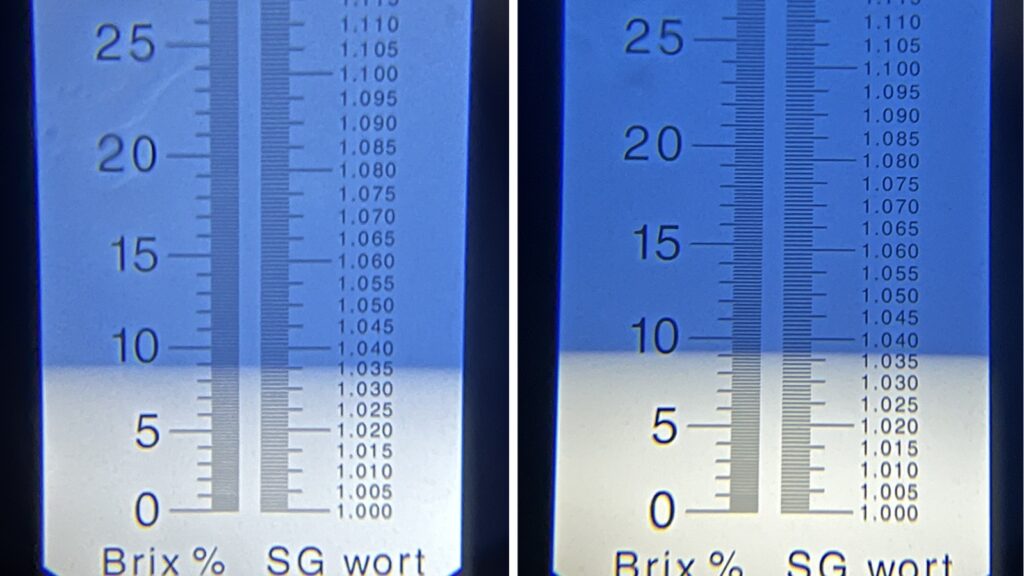
I then pitched a pouch of Imperial Yeast L13 Global into each batch of wort.
The beers were left to ferment at 48°F/9°C for 10 days before I took hydrometer measurements indicating the beers were at the same FG.
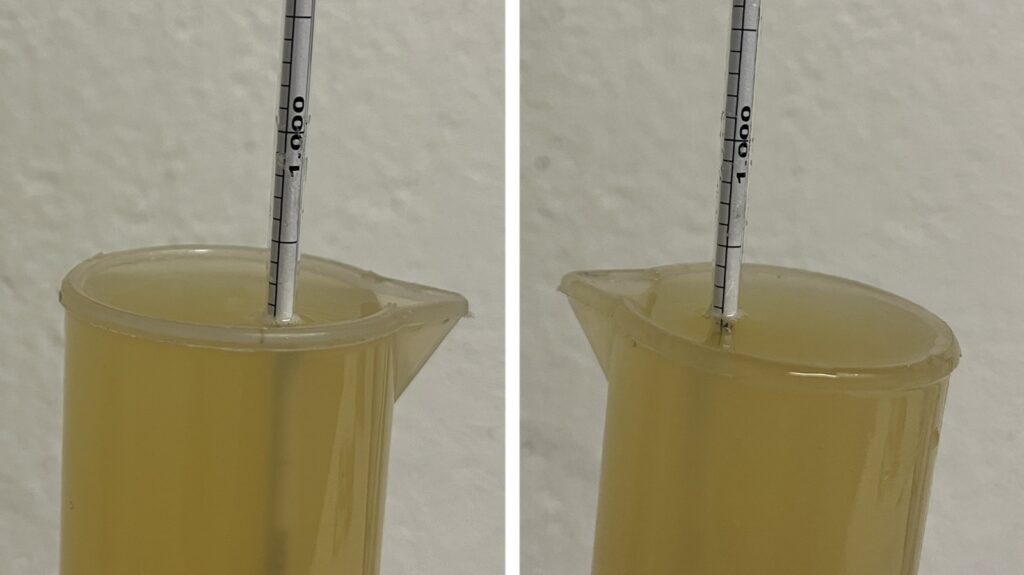
At this point, I cold crashed the beers to 32°F/0°C overnight then pressure-transferred each to CO2 purging kegs that were placed on gas in my keezer. After a month of lagering, the beers were clear, carbonated, and ready for evaluation.
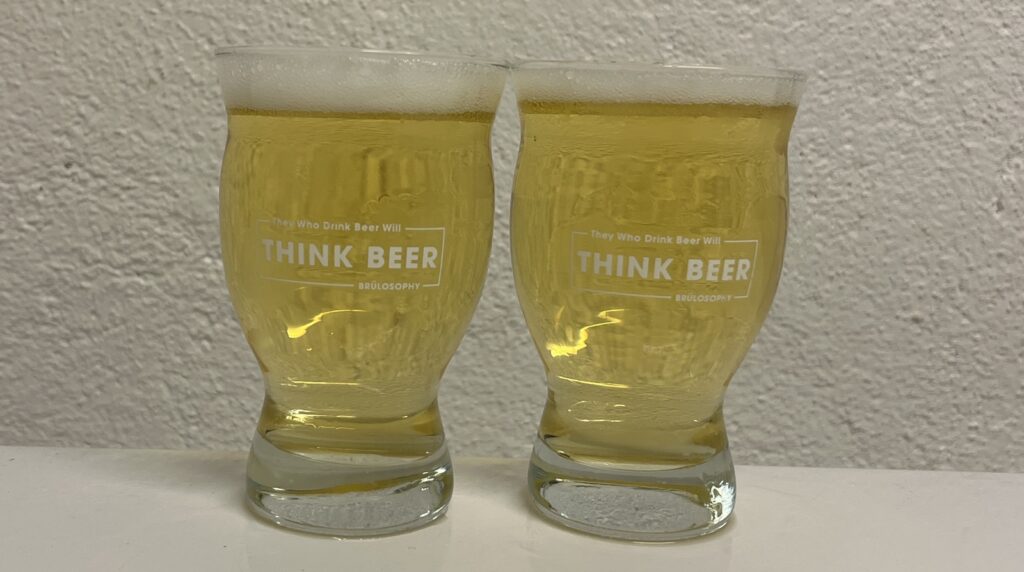
| RESULTS |
A total of 22 people of varying levels of experience participated in this xBmt. Each participant was served 1 sample of beer where the kettle hop amount was based on alpha acid degradation and 2 samples of the beer where the kettle hop addition was based on the alpha acid listed on the package in different colored opaque cups then asked to identify the unique sample. While 12 tasters (p<0.05) would have had to accurately identify the unique sample in order to reach statistical significance, only 10 did (p=0.16), indicating participants in this xBmt were unable to reliably distinguish a German Leichtbier where the kettle hop amount was based on its expected alpha acid degradation from one where the kettle hop amount was based on the alpha acid content listed on the package.
My Impressions: Out of the 5 semi-blind triangle tests I attempted, I was unable to correctly identified the odd-beer-out a single time. These beers were similar enough to my palate as to be indistinguishable, including their level of bitterness. While I felt these beers were within style parameters, I wasn’t the biggest fan, as they were a touch too bitter and had an odd fermentation character.
| DISCUSSION |
When determining the kettle hop amounts, some brewers simply rely on the alpha acid content listed on the package whereas others factor in the degradation of alpha acids known to occur over time, which results in a slightly higher usage rate. Interestingly, tasters in this xBmt were unable to reliably distinguish a German Leichtbier where the kettle hop amounts were based on expected alpha acid degradation from one where the kettle hop amounts were based on the alpha acid content listed on the package.
For some important specifics about the design of this xBmt, 150 grams of hops were used in the adjusted batch while 114 grams were used in the non-adjusted batch, leading to predicted IBUs of 21 and 27, respectively. The fact tasters were unable to tell them apart contradicts the accepted idea that people can generally perceive a 5 IBU difference, though perhaps it speaks more to the general inaccuracy of modern methods of predicting bitterness. To better understand the real differences between these beers, we sent samples to Oregon Brew Lab for testing, and the results were rather curious.
Despite using 36 grams/1.3 oz more hops in the adjusted batch, which was predicted to result in a delta of 6 IBU, lab testing revealed the true difference was barely over 3 IBU. Perhaps the claims of a 5 IBU difference being the perceptible threshold are true, but clearly, this is difficult to accurately predict with modern equations. Regardless, I’ll continue relying on HSI when determining kettle hop amounts, mostly because I’m used to doing it, but it’s not something I’ll lose sleep over. With that said, based on several lab results indicating my calculated IBU was consistently higher than the measured IBU, I adjusted my hop utilization in Brewfather to 67% prior to this batch, and while it did come closer, it was still off.
If you have any thoughts about this xBmt, please do not hesitate to share in the comments section below!
Support Brülosophy In Style!
All designs are available in various colors and sizes on Amazon!
Follow Brülosophy on:
FACEBOOK | TWITTER | INSTAGRAM
If you enjoy this stuff and feel compelled to support Brulosophy.com, please check out the Support page for details on how you can very easily do so. Thanks!


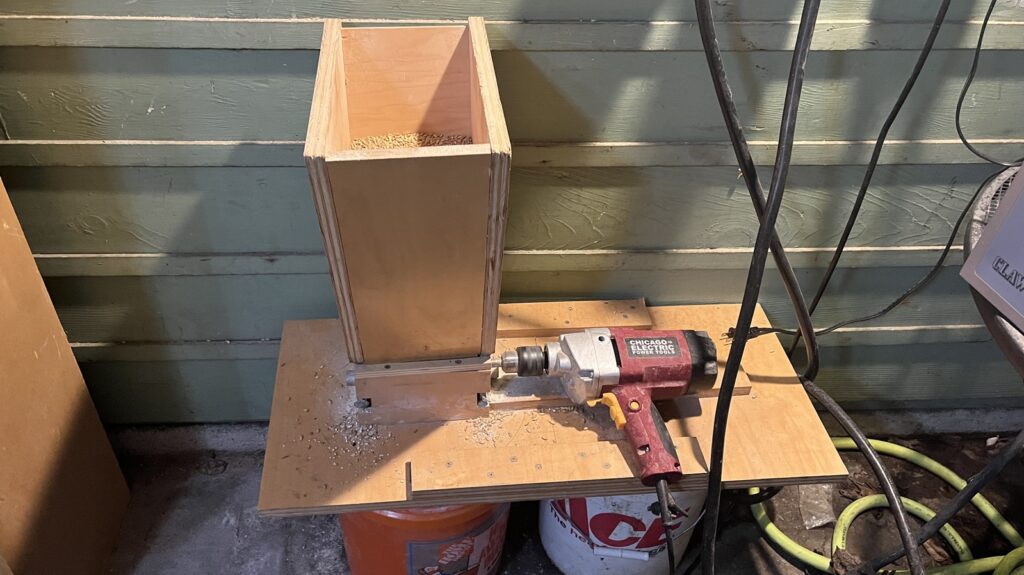
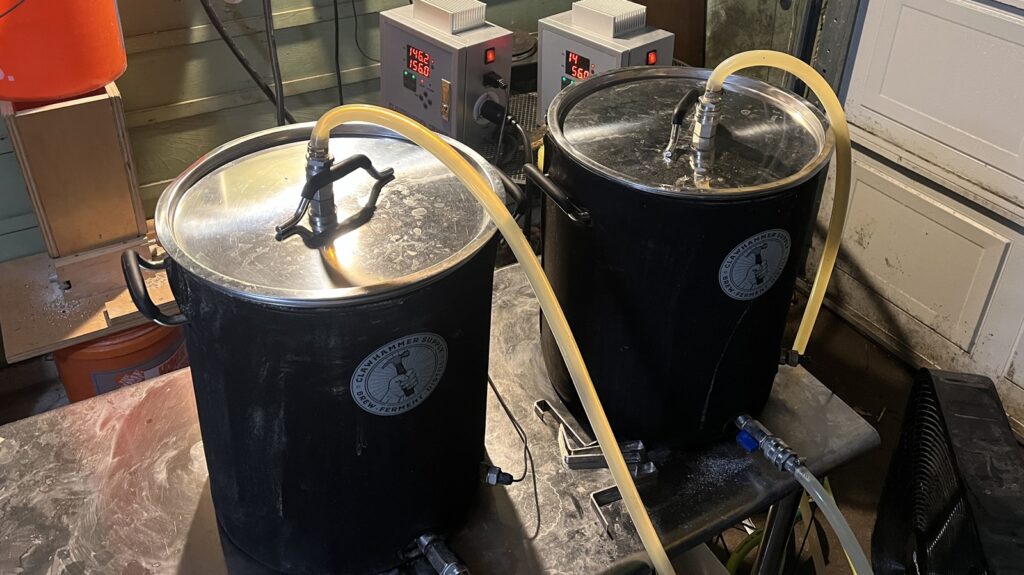
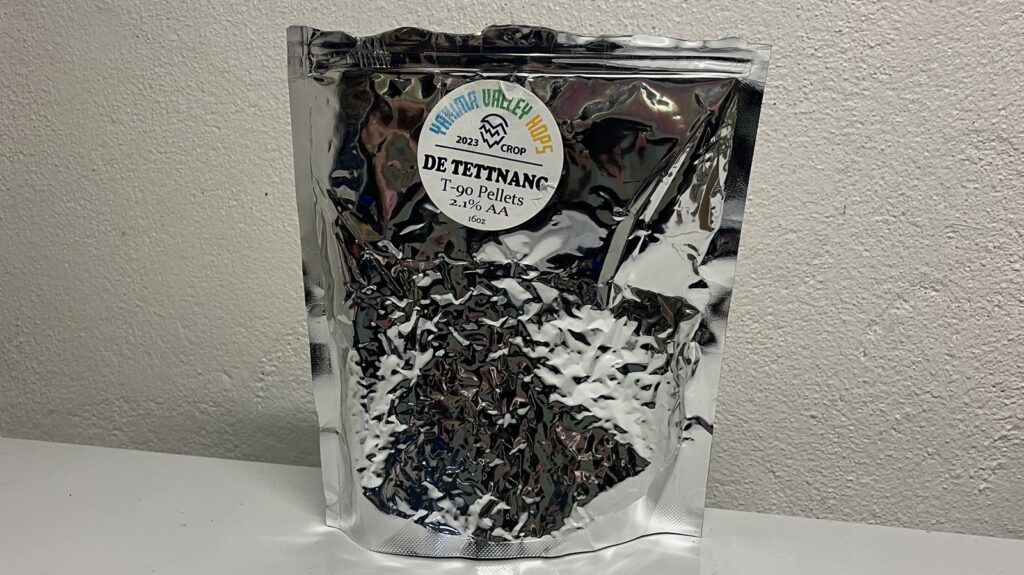
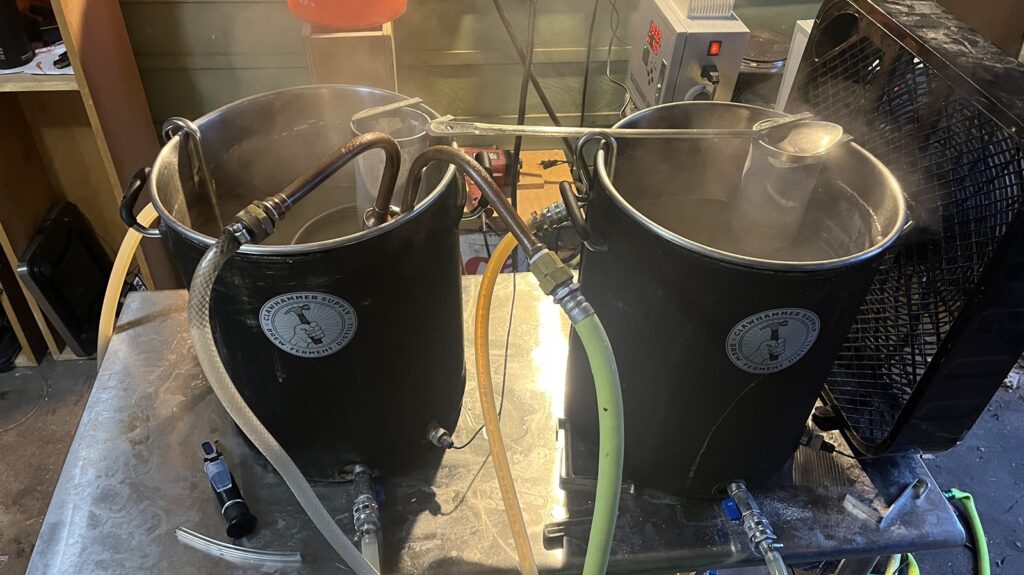
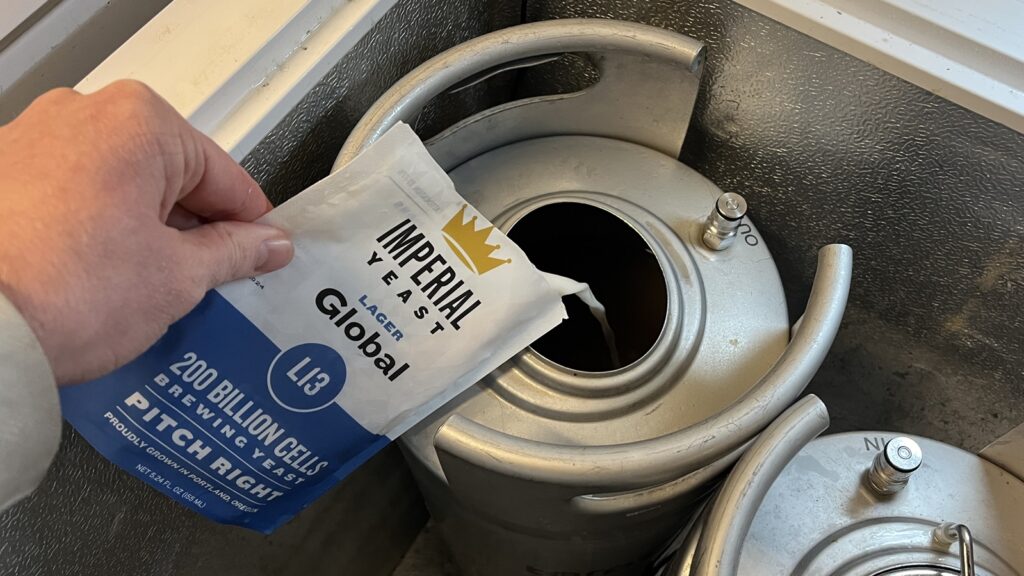
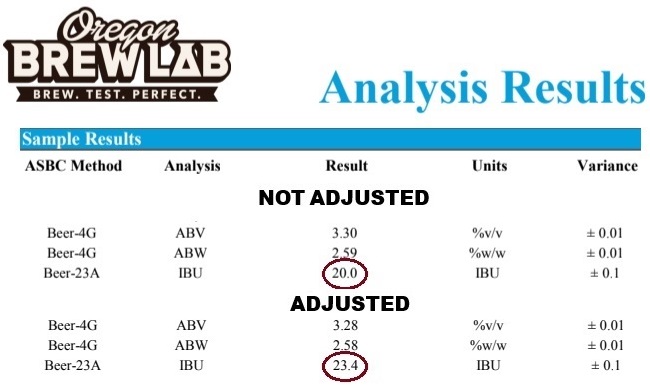





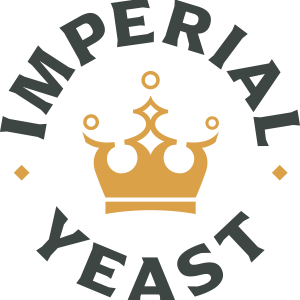

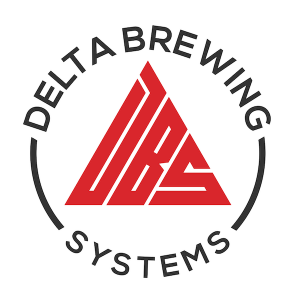


1 thought on “exBEERiment | Bittering Hops: Impact Different Amounts Have On A German Leichtbier”
Great to see Lab results as well. Keep them coming.